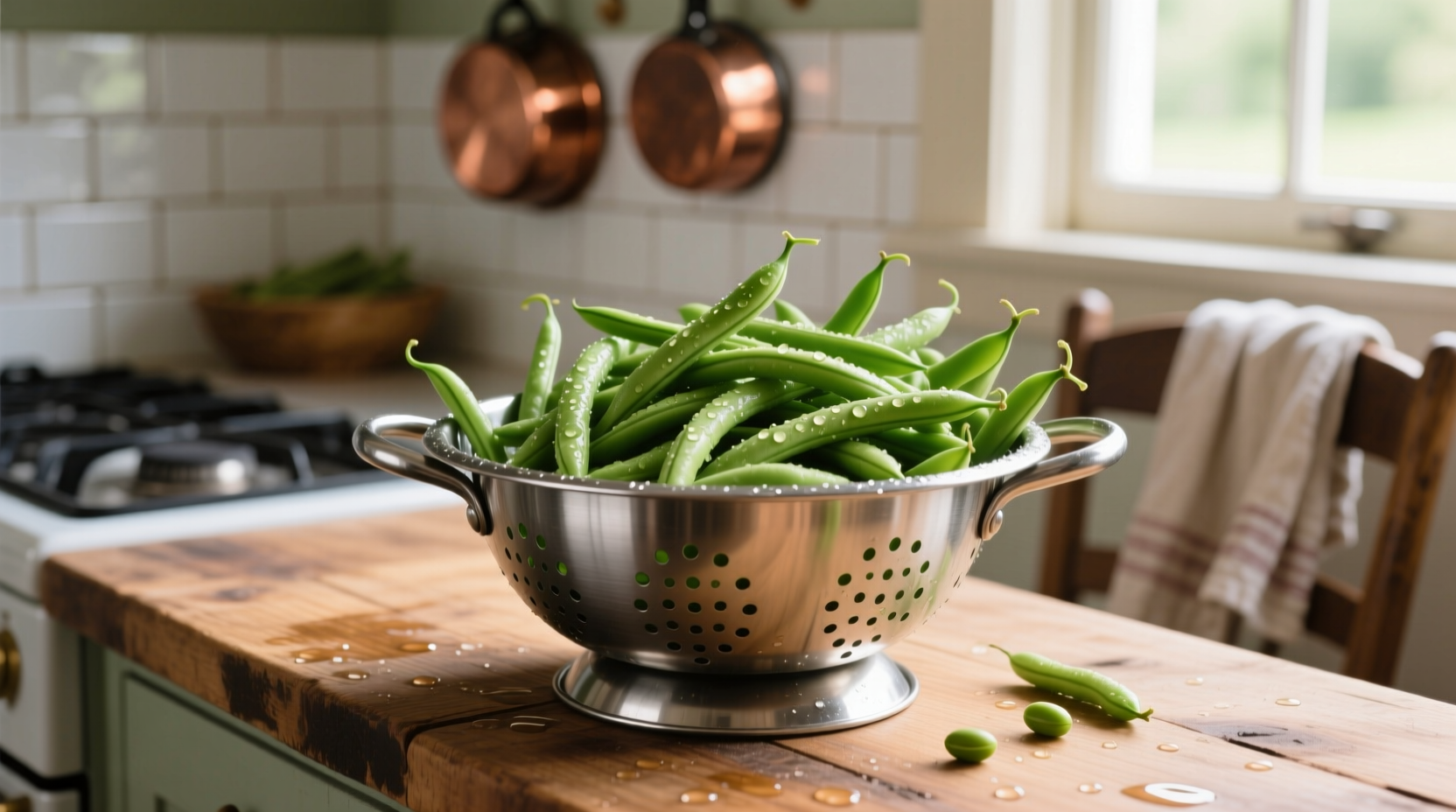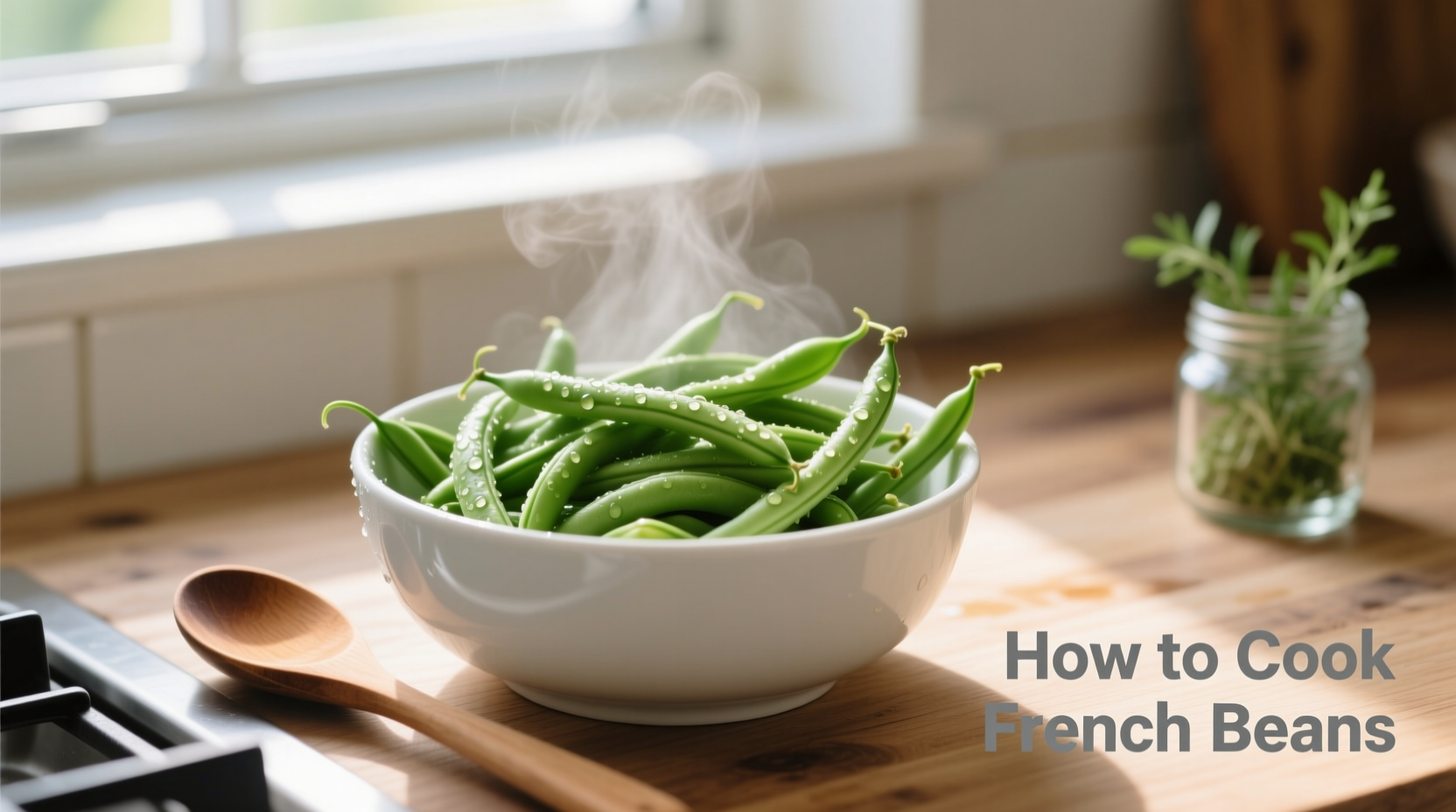Understanding French Beans: More Than Just Green Beans
French beans, also known as haricots verts, are slender, delicate green beans originating from France. Unlike standard green beans, they're harvested younger, resulting in more tender texture and less fibrous quality. According to the USDA National Nutrient Database, one cup of cooked French beans provides 4 grams of fiber and 15% of your daily vitamin C needs while containing only 44 calories.
Selecting the Freshest French Beans
Quality starts at selection. Look for these characteristics when choosing French beans:
- Vibrant green color without yellowing or blemishes
- Firm, crisp texture that snaps cleanly when bent
- Uniform thickness for even cooking (about the width of a pencil)
- No visible seeds through the pod wall
Seasonality matters—French beans peak from late spring through early fall. During off-season, frozen varieties often surpass fresh options in quality.
Essential Preparation Techniques
Proper preparation ensures even cooking and optimal texture:
- Washing: Rinse beans under cold running water, gently rubbing to remove any dirt
- Trimming: Remove stem ends using a sharp knife or by snapping them off (the traditional French method)
- Optional tail removal: For formal presentations, remove the thin tail end as well
- Uniform sizing: Cut longer beans to match shorter ones for consistent cooking
Never soak French beans before cooking—that practice dilutes flavor and can make them waterlogged.
Three Professional Cooking Methods Compared
Each cooking technique yields different textures and flavor profiles. The table below shows key differences:
| Cooking Method | Time Required | Texture Result | Best For |
|---|---|---|---|
| Boiling | 8-10 minutes | Firm but tender | Salads, quick side dishes |
| Steaming | 6-8 minutes | Crisp-tender, vibrant color | Preserving nutrients, delicate dishes |
| Sautéing | 5-7 minutes | Slightly caramelized, rich flavor | Main dishes, restaurant-style presentation |
Perfect Boiling Technique: The Restaurant Method
Boiling remains the most accessible method for home cooks. Follow these steps for perfect results:
- Fill a large pot with water (use 4 quarts per pound of beans)
- Add 2 tablespoons kosher salt (creates "sea water" concentration)
- Bring to a rolling boil before adding beans
- Cook uncovered for 8-10 minutes (set timer immediately after adding beans)
- Test for doneness at 7 minutes by tasting a bean
- Immediately transfer to ice water bath to stop cooking
The critical timing window appears in this progression:
- 0-5 minutes: Beans remain hard and raw
- 6-7 minutes: Texture begins to soften
- 8 minutes: Ideal crisp-tender stage ("al dente" for beans)
- 9-10 minutes: Approaching softness, still acceptable
- 11+ minutes: Becoming mushy and losing vibrant color

Steaming for Maximum Nutrient Retention
Steaming preserves more nutrients than boiling. Here's how professional chefs do it:
- Place 1 inch of salted water in a pot with a steamer basket
- Bring water to simmer before adding beans
- Arrange beans in single layer in basket
- Cover tightly and steam for 6-8 minutes
- Check at 5 minutes by lifting lid briefly
- Remove immediately when beans reach crisp-tender stage
According to research from the Journal of Food Science, steaming preserves 25% more vitamin C than boiling due to reduced water exposure. The key limitation: steaming requires more attention as overcooking happens faster than with boiling.
Sautéing for Restaurant-Quality Flavor
Sautéing creates beautiful caramelization and depth of flavor:
- Blanch beans in boiling salted water for 3 minutes
- Transfer to ice water, then drain thoroughly
- Heat 2 tablespoons olive oil or butter in skillet over medium-high heat
- Add beans in single layer (work in batches if needed)
- Cook undisturbed for 2 minutes to develop caramelization
- Toss and cook 2-3 minutes more until crisp-tender
- Add finishing touches during last minute of cooking
Seasoning Secrets for Flavorful French Beans
Elevate your French beans with these chef-recommended combinations:
- Classic French: Butter, lemon zest, and fresh thyme
- Mediterranean: Olive oil, garlic, and toasted almonds
- Asian-inspired: Sesame oil, ginger, and a splash of rice vinegar
- Provençal: Olive oil, garlic, and herbes de Provence
Add acidic elements like lemon juice or vinegar after cooking to prevent beans from becoming mushy during the cooking process. The University of California Cooperative Extension confirms that acids interfere with pectin breakdown, helping maintain texture.
Avoid These 4 Common French Bean Mistakes
Even experienced cooks make these errors:
- Overcrowding the pot: Causes uneven cooking and steaming instead of boiling
- Adding beans to cold water: Results in uneven texture and loss of vibrant color
- Skipping the ice bath: Residual heat continues cooking, leading to mushiness
- Seasoning too early: Salt added at beginning can toughen beans (except in boiling water)
Serving and Storage Tips
For best results, serve French beans immediately after cooking. If preparing ahead:
- Store cooked beans in airtight container in refrigerator for up to 3 days
- Reheat gently in steamer or sauté pan—never microwave
- Revive leftovers with a quick toss in hot butter or olive oil
- Use day-old beans in salads where slightly softer texture works well
French beans pair beautifully with roasted meats, fish dishes, and grain salads. For special occasions, try them with toasted hazelnuts and orange vinaigrette—a combination favored by Michelin-starred chefs.











 浙公网安备
33010002000092号
浙公网安备
33010002000092号 浙B2-20120091-4
浙B2-20120091-4